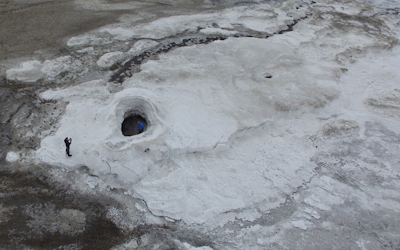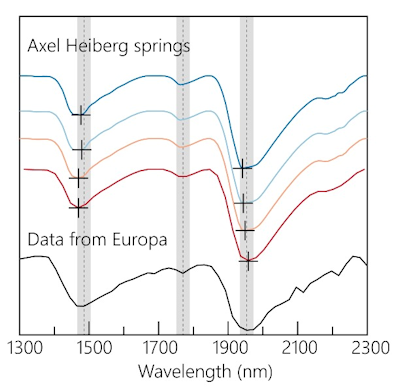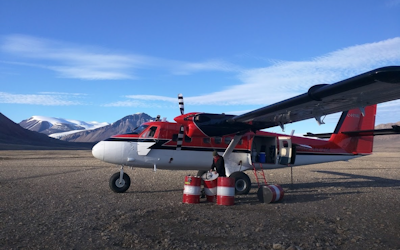You are here
- Home
- Scientific storytelling: A recipe for a peer-reviewed paper
Scientific storytelling: A recipe for a peer-reviewed paper
Peer-reviewed journal articles, or scientific papers, are the bread-and-butter of scientific research. They are the primary means by which scientists communicate a ‘finding’ – a new piece of scientific knowledge- to others across the world and into future generations. You can think of them as building blocks: single units of new information in the ever-expanding sphere of human knowledge. Yes, scientists may also present findings at conferences, in books, interviews, or blog posts, but the peer-reviewed journal article remains the gold-standard for describing new knowledge. This is because they have, in theory, been scrutinised by other experts, and are seen as having passed the test. They are ready to be built upon by other building blocks as human knowledge grows.
Setting aside the less-than-perfect system that is academic peer review, you might ask: how are these building blocks created? The natural world isn’t divided up neatly into paper-sized chunks of information, ready to be studied one-by-one. So how do we decide what new information goes into a paper, and what gets left out?
Unfortunately, there are no one-size-fits-all answers to these questions. There is enormous variation amongst papers; some have a very simple argument to make. Others report complex or extremely large sets of new data. There are some that describe new experimental or analytical methods, and still others that make predictions based on computer models. There is no agreed-upon quantity of data that defines a paper, neither do scientists simply publish everything they’ve done within some time-frame.
So, what is the recipe? On a basic level, papers tell a story. These stories aren’t fabrications, of course; they are firmly grounded in reality and backed up by data or mathematical reasoning, but are stories nonetheless. They present a new idea, based on the author’s interpretation of their data, in a form that can be digested by another human mind.
To try and give some insight into how this can work, I thought I’d outline an example from my own research. In 2017 I was lucky enough to visit Axel Heiberg Island- a remote uninhabited island in Canada’s High Arctic. I was going to get samples of some unique, very salty, very cold springs. Based on some previous exploration there, these springs seemed to be forming huge deposits of salts that, we thought, might be similar to those on the surface of Jupiter’s moon Europa. This was an opportunity to learn about how such materials form under natural conditions.
As Axel Heiberg is very remote, and very expensive to access, we threw the kitchen sink at it. I collected hundreds of samples from three different springs. Over the next couple of years, a team of collaborators and I, including several other members of AstrobiologyOU, gradually worked our way through this pile of samples. We generated large amounts of data on the chemistry of the springs, the minerals they formed, microorganism that live in the springs, and how the salt deposits would appear to a range of spacecraft instruments if they were on the surface of Europa.

Base camp on Axel Heiberg

An aerial view of us sampling one of the springs on Axel Heiberg Island.
The white materials aren’t snow; they are all salts!
As we looked through the data, we realised that there was a huge range of new information- new ‘stories’ that could be told. Publishing it all together would have been unintelligible: an information overload! It was obvious that a strategy was needed to prioritise our findings.
To make the clearest argument, sometimes less is more. As no one had yet pointed out how similar these salt deposits were to those on Europa’s surface, we decided to start there. We used spacecraft-relevant data to show how closely some of the deposits matched data from Europa taken by the Galileo spacecraft. We then built a case for how we thought these deposits formed from upwelling brines, including only the data that was needed to tell this story. The rest of the data was kept for future papers. Our ‘story’ for the paper was, in essence: “Hey, look everyone! We found some natural materials on Earth that look very much like what we see on Europa.
Here’s how we think they formed” (for anyone interested, you can check out this paper here).

A good match. Near-infrared spectra of salts on Axel Heiberg, measured at Europa surface temperature.
There are countless ways to approach writing a paper from the same set of data. As if to illustrate this, other members of the AstrobiologyOU team realised that hiding in the water chemistry data from Axel Heiberg was another important finding. One of the springs had similarities to waters thought to exist on ancient Mars. This meant the microbiology of the spring could reveal possible niches for life that may once have existed there (Michael Macey’s paper can be accessed here). Now these two different findings have been peer-reviewed, and published, they provide a foundation for other stories in our remaining data from Axel Heiberg to build upon them (watch this space!).
So, what is the recipe for a scientific paper? Well, as you probably guessed, there isn’t one. We try to tell informative stories that describe reality, using the data that are needed to make our argument: no more, no less. Stories that most closely match reality will stand the test of time and go on to provide strong foundations for other stories. Because of this, storytelling - presenting the critical information in a way that can be easily digested by others - is one of the most important skills we learn as scientists.

Not a bad week at the office! A Twin Otter prepares to fly us and our samples off Axel Heiberg.

Author:
Mark Fox-Powell
is a Research Fellow
in the School of Environment, Earth and Ecosystem Sciences at the Open University